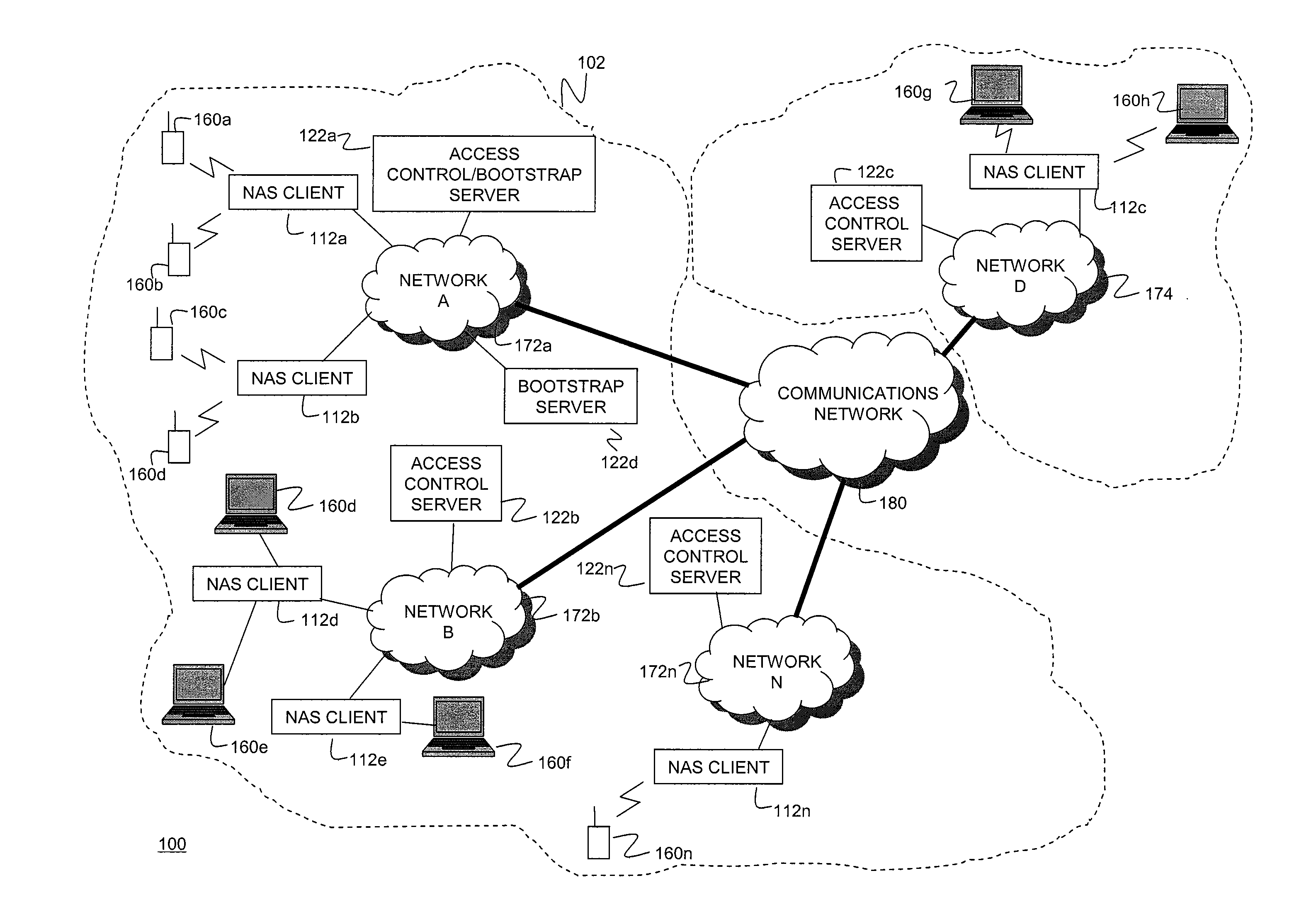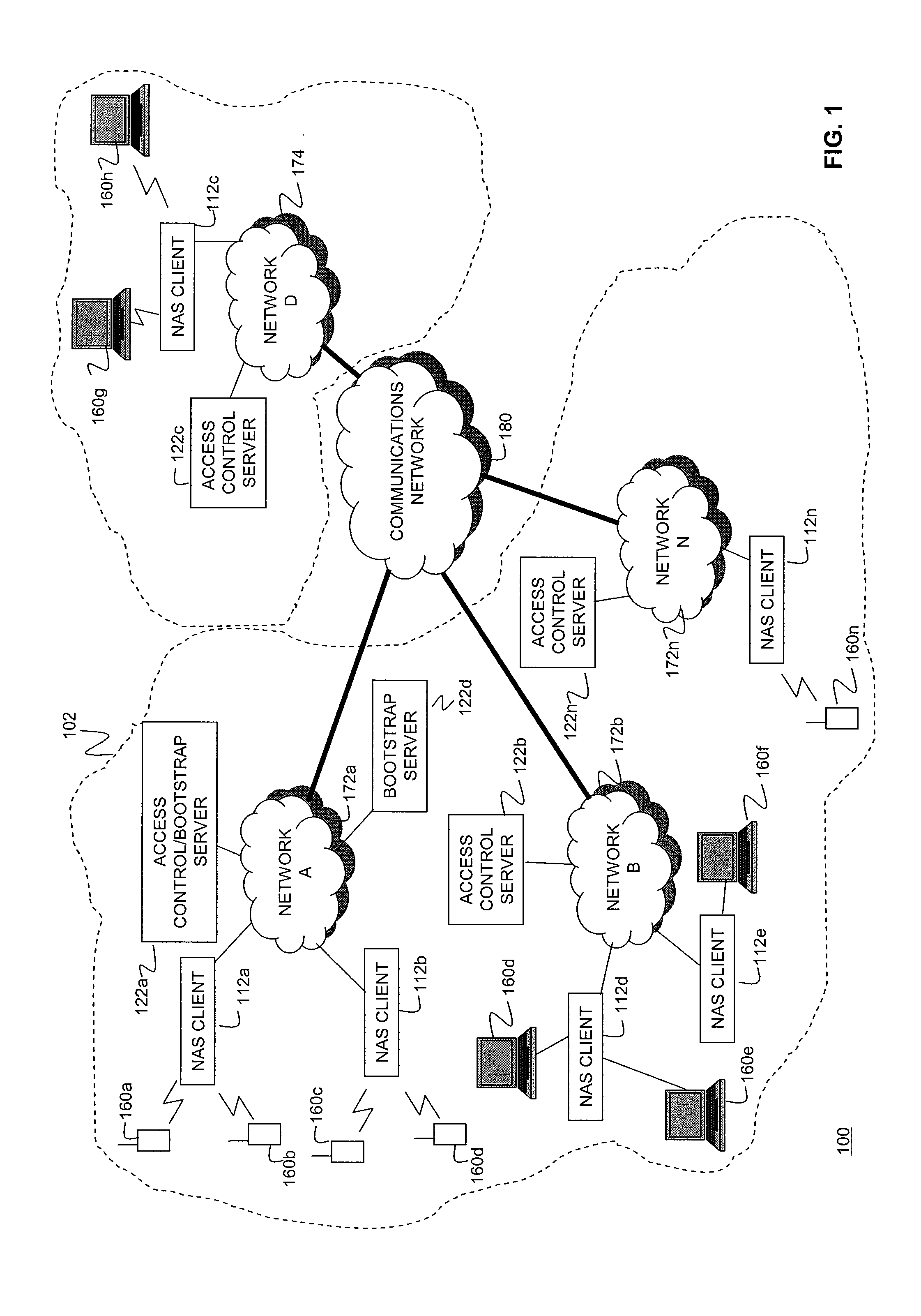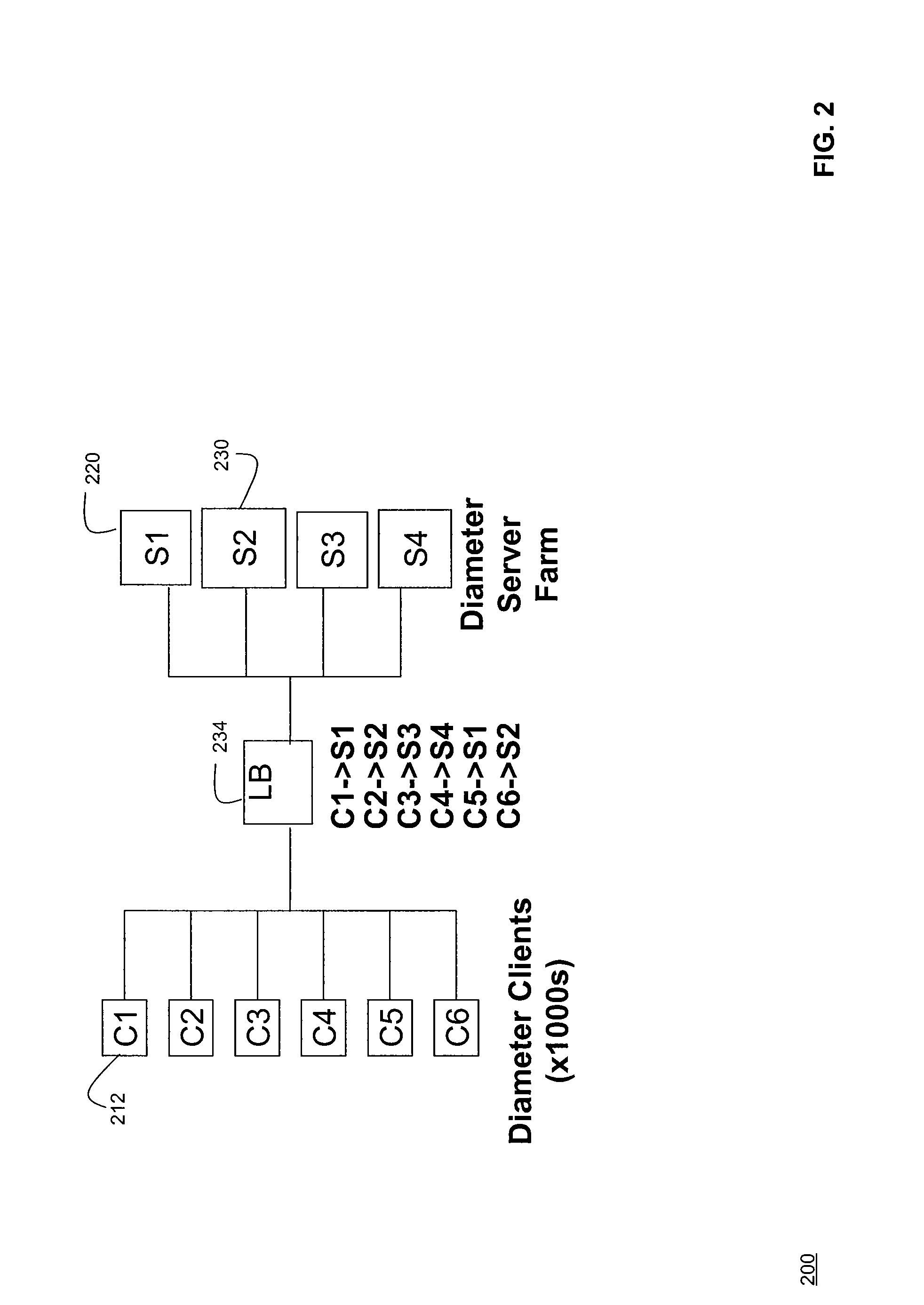Systems and Methods for Server Load Balancing Using Authentication, Authorization, and Accounting Protocols
a server load balancing and authentication technology, applied in the field of communication, can solve the problems of increasing the cost and complexity of managing the network architecture limiting the number of dedicated load balancer computers or machines in front of the diameter server, and increasing the complexity of the network access server and the router
- Summary
- Abstract
- Description
- Claims
- Application Information
AI Technical Summary
Benefits of technology
Problems solved by technology
Method used
Image
Examples
Embodiment Construction
[0023]While the present invention is described herein with reference to illustrative embodiments for particular applications, it should be understood that the invention is not limited thereto. Those skilled in the art with access to the teachings provided herein will recognize additional modifications, applications, and embodiments within the scope thereof and additional fields in which the invention would be of significant utility.
1.0 Structural Embodiments
[0024]Embodiments of the present invention are described primarily in the context of a Diameter server system (e.g., a server farm) used in GSM, CDMA, TDMA, 3GPP2, and WiMAX, and Wi-Fi networks. It should, however, be understood that the invention is not limited to wireless communications networks. The present invention may be used in fixed line, DSL, converged, and other wireline, fixed, or mixed communication networks, as would be recognized by persons of skill in the art.
[0025]Embodiments of the present invention exploit base ...
PUM
 Login to View More
Login to View More Abstract
Description
Claims
Application Information
 Login to View More
Login to View More - R&D
- Intellectual Property
- Life Sciences
- Materials
- Tech Scout
- Unparalleled Data Quality
- Higher Quality Content
- 60% Fewer Hallucinations
Browse by: Latest US Patents, China's latest patents, Technical Efficacy Thesaurus, Application Domain, Technology Topic, Popular Technical Reports.
© 2025 PatSnap. All rights reserved.Legal|Privacy policy|Modern Slavery Act Transparency Statement|Sitemap|About US| Contact US: help@patsnap.com



